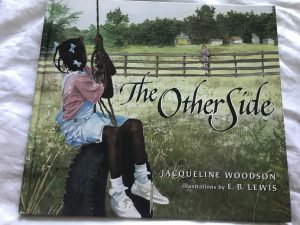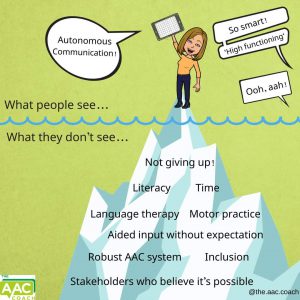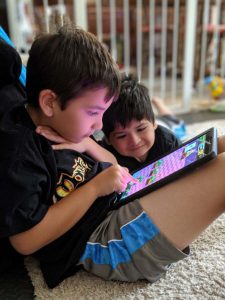The basics of telehealth:
Due to a global pandemic, school systems have temporarily suspended classes and the CDC is recommending social distancing (6 feet) between people to prevent the spread of COVID-19. This created an area of challenge for occupational therapists across the nation with a pediatric population—how do we deliver service without exposing our vulnerable clients to COVID-19?
Teletherapy or telehealth is a growing field that has been in the spotlight suddenly as face-to-face interactions become increasingly more risky. The American Occupational Therapy Association defines telehealth as “the application of evaluative, consultative, preventative and therapeutic services delivered through information and communication technology.” In plain language, it’s the same therapy services delivered through a platform such as Google Meetup or Zoom with a facilitator on the end of the client being coached through the activities to prove the support that the therapist typically would live.
A typical telehealth session follows the same format as an in-person session with a few key exceptions—you must plan ahead with more activities than you think will fill the time, you must arrange the time/platform with the parents, and you might need to allow for a few minutes at the start of the session for the child to show you around their house or a new toy/game/item.
Week One Areas of Challenge: figuring out a strong, clear connection platform. Because everyone was trying to access video chat at a higher rate than before, platforms varied in their ability to handle the traffic. Clocktree, Zoom, Google Meetup, and doxy.me were all trialed, with Google Meetup coming out as the most secure with the clearest and most consistent video connection.
Week One Areas of Success: partnering with a strong facilitator on the end of the child is a key component to a successful session. Determining the proper amount of time for a telehealth session and recognizing that it may be smaller than the time you can have full engagement in person. The 30-45 minutes range seems to be most appropriate for elementary-aged children.

 One of my favorite books to encourage children to discuss discrimination and racism is
One of my favorite books to encourage children to discuss discrimination and racism is  As our virtual learning school year has wrapped up in Northern Virginia, we are all left wondering what will be waiting for our students at the end of this summer “break”. The public schools are trying to figure out exactly how to walk the fine line between addressing a public health crisis while also maintaining high levels of instruction for children, and attempting to achieve programs that provide equity for all students. Truthfully, I am thankful I am not making the decisions. In the end, the decision made will inevitably leave many people frustrated. The truth is, there are no “right” decisions.
As our virtual learning school year has wrapped up in Northern Virginia, we are all left wondering what will be waiting for our students at the end of this summer “break”. The public schools are trying to figure out exactly how to walk the fine line between addressing a public health crisis while also maintaining high levels of instruction for children, and attempting to achieve programs that provide equity for all students. Truthfully, I am thankful I am not making the decisions. In the end, the decision made will inevitably leave many people frustrated. The truth is, there are no “right” decisions.  This picture from AAC Coach says so much about the nature of success with communication when using AAC. A few years ago I chatted with a college student who was able to fluidly answer my questions while typing on her iPad. It seemed impossible the story she was sharing was true – that until middle school she had been treated as though she had a significant intellectual disability, denied access to inclusive classrooms, and overheard teachers making comments that her parents “should just institutionalize her”. Yet here was this put together, bright college student who only stuck out because she typed her replies to me instead of speaking them aloud. It would be easy to assume from that conversation that all she needed was typing lessons and an iPad – but it is so much more than that.
This picture from AAC Coach says so much about the nature of success with communication when using AAC. A few years ago I chatted with a college student who was able to fluidly answer my questions while typing on her iPad. It seemed impossible the story she was sharing was true – that until middle school she had been treated as though she had a significant intellectual disability, denied access to inclusive classrooms, and overheard teachers making comments that her parents “should just institutionalize her”. Yet here was this put together, bright college student who only stuck out because she typed her replies to me instead of speaking them aloud. It would be easy to assume from that conversation that all she needed was typing lessons and an iPad – but it is so much more than that. A few weeks ago I was able to watch a webinar from Lauren Enders in regards to fun activities to jumpstart AAC learning. Last week I shared how much the need for making our lessons fun and connecting with our students resonated with me, particularly as we begin to meet with our students in person and may feel pressured to make up for lost time.
A few weeks ago I was able to watch a webinar from Lauren Enders in regards to fun activities to jumpstart AAC learning. Last week I shared how much the need for making our lessons fun and connecting with our students resonated with me, particularly as we begin to meet with our students in person and may feel pressured to make up for lost time.
